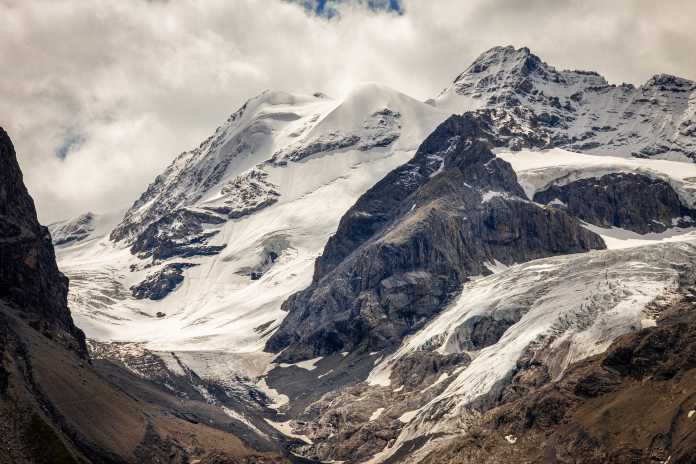Among the climate click-bait topics getting media attention today is a series of stories implying climate change is giving rise to algae on the Presna glacier in Northern Italy, leading to melting of the glacier.
Live Science, CNN, CNBC, and The Guardian, among other media outlets, all published variations of this climate scare in the past few days. CBS’s write up, titled “Mysterious pink “watermelon snow” has been appearing in the Italian Alps — and it may warn of environmental disaster,” is typical of the coverage—misleading and overwrought.
It seems that a pink algae has appeared on some areas on the alpine glacier Presna, in Italy. However, as the scientists interviewed in the press reports point out, repeatedly, the pink algae is not a mystery at all in the sense that it is not unusual but rather a “well-documented” seasonal phenomena on Presna. Similar seasonal algae blooms occur in areas of Greenland, with green algae appearing in a small part of Antarctica, during the spring and summer months as seasonal snow melts and sunlight reaches the underlying surface. As Biagio Di Mauro, of the Institute of Polar Sciences (ISP) at Italy’s National Research Council, who traveled to the glacier to study the phenomena said in a press release, “The alga is not dangerous, it is a natural phenomenon that occurs during the spring and summer periods in the middle latitudes but also at the Poles.”
Still CBS and other news outlets tried to make a climate mountain out of a natural mole hill, warning the algae reduces the reflectivity of the snow and ice, which is true, resulting in localized warming, causing ever more melting. Also true but irrelevant since it is part of a natural cycle which happens seasonally every summer.
Indeed, Presna has one of the shortest summer seasons and longest ski seasons in the Alps, being, in the words of one website, “one of the few glaciers where skiing is possible until late spring.” There is no evidence this has changed in the last three decades. None of the media outlets present any data indicating the temperatures in and around Presna have experienced a significant warming trend in recent years, a fact which undermines their seemingly breathless admonition, “it [the algae] may actually be a warning sign of environmental trouble.”
CBS’s story says the “snow algae productivity has implications for carbon dioxide in the atmosphere,” not telling the reader what the implications are but rather, based on the warnings contained throughout the story, leaving them with the impression the implications are dangerous. In truth, if one is concerned about increasing atmospheric carbon dioxide concentrations, the algae’s annual appearance should be thought of as good news. As CBS ignores, but I explained in a May 29 Climate Realism article discussing a faux “green snow” scare in Antarctica, the algae bloom removes carbon dioxide from the atmosphere. Thus while the bloom may contribute to a marginal localized warming in areas on the glacier, because it removes carbon dioxide from the atmosphere, if you believe rising CO2 is causing climate change, then the pink algae is reducing the threat.
In the end, while media outlets may sell papers and get online clicks by warning “mysterious” pink ice is appearing on Presna glacier, the facts are less alarming. The algae bloom is a natural seasonal phenomena, worth studying, undoubtedly, but not worth worrying about.


















[…] No, Global Warming Did Not Create Pink Algae in Snow, Nor Is It Dangerous […]